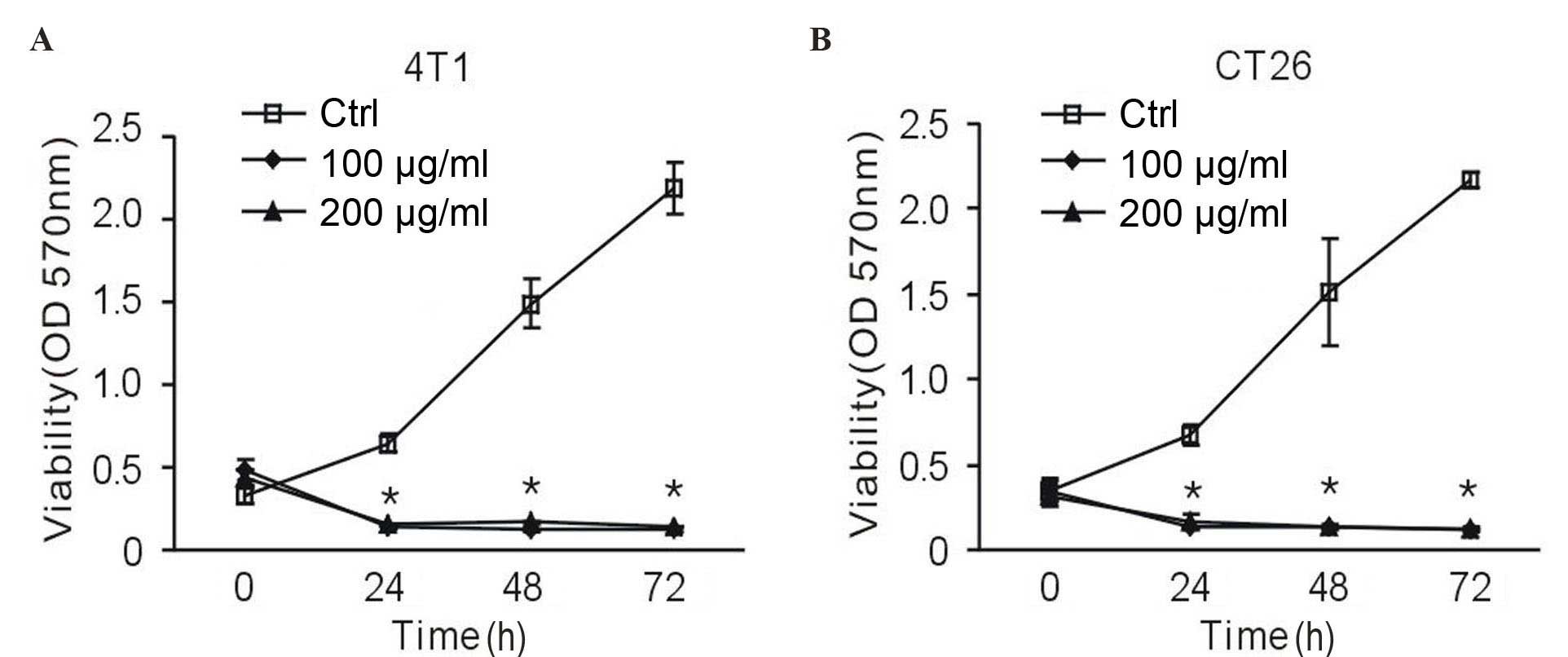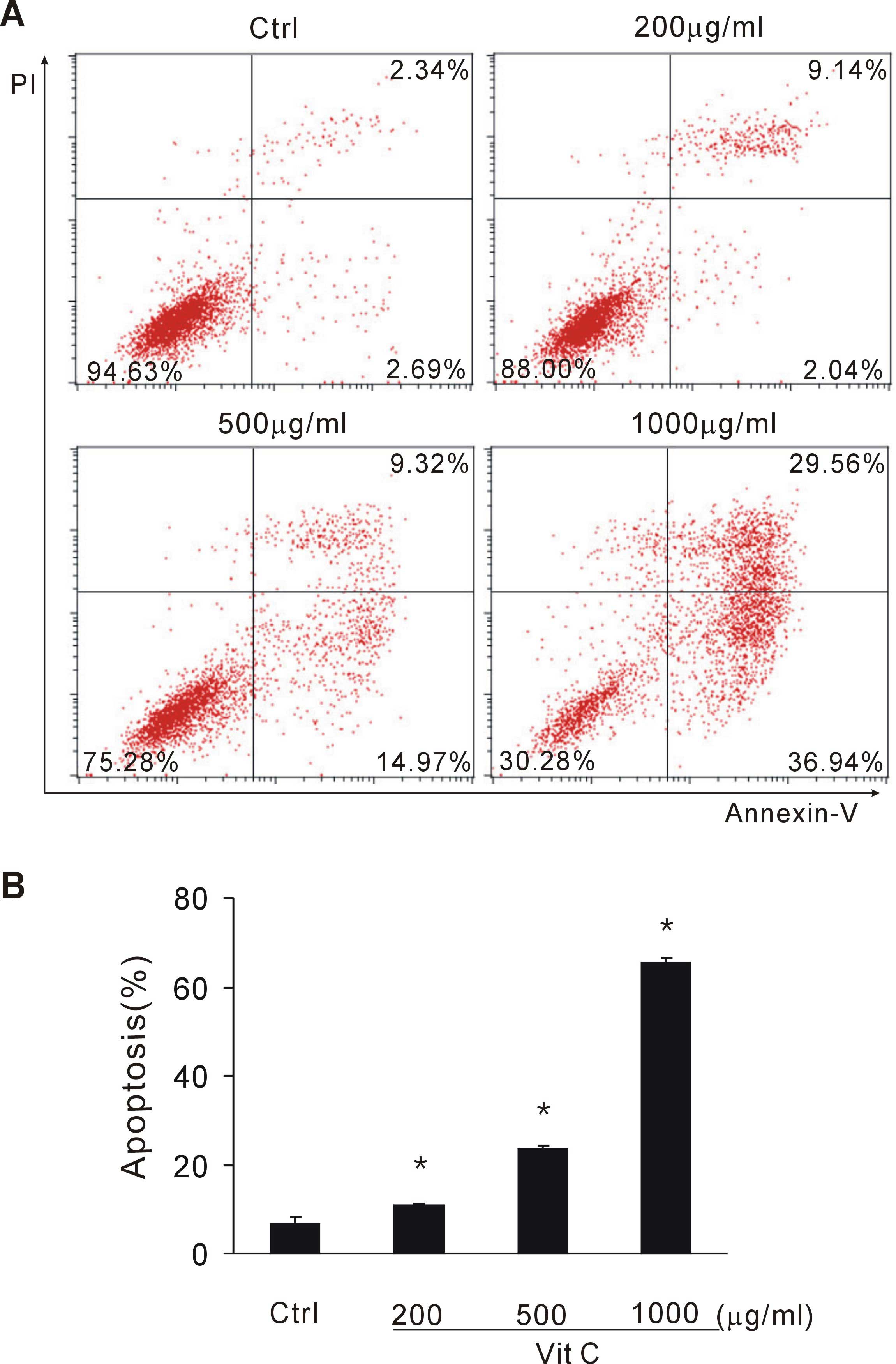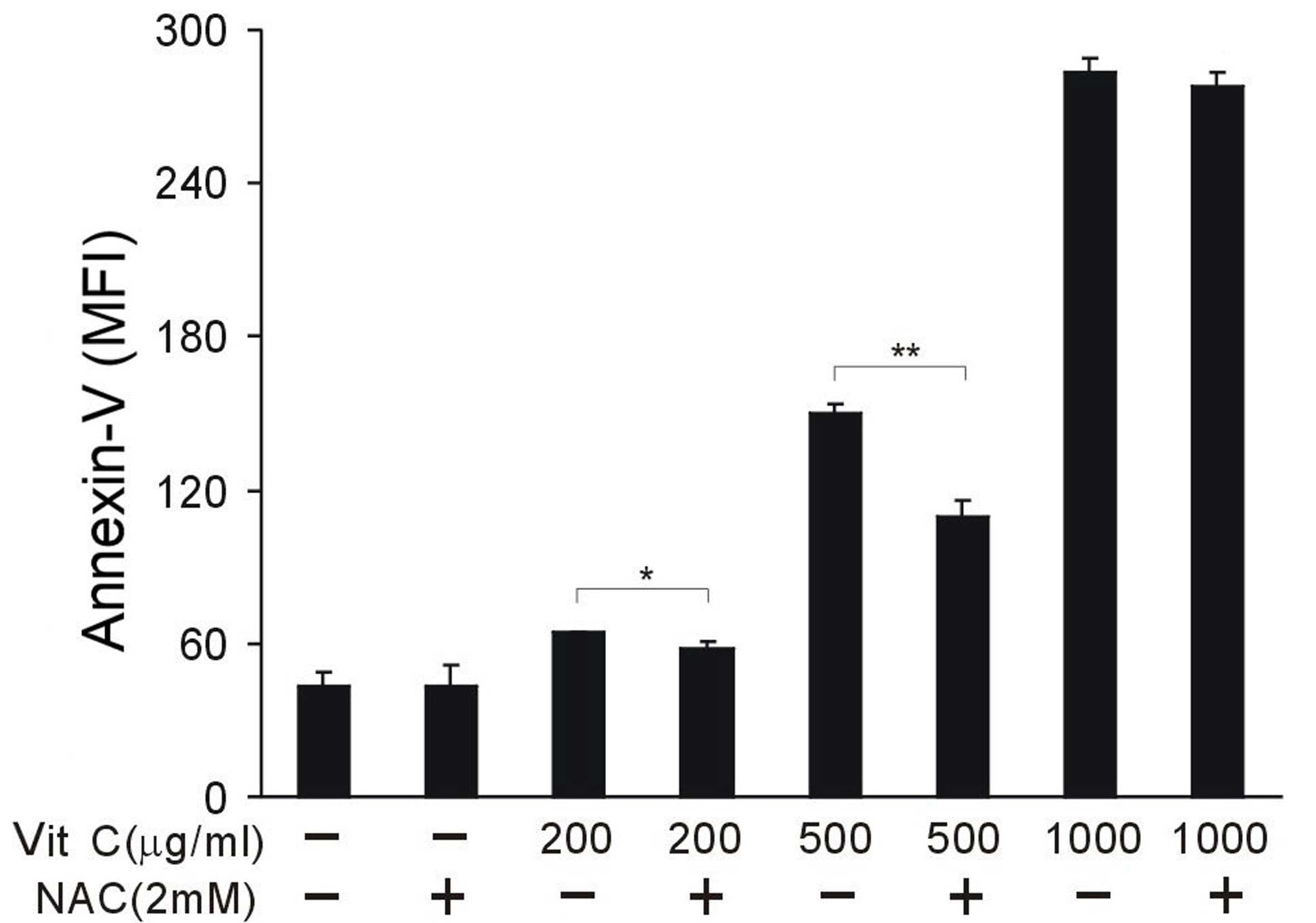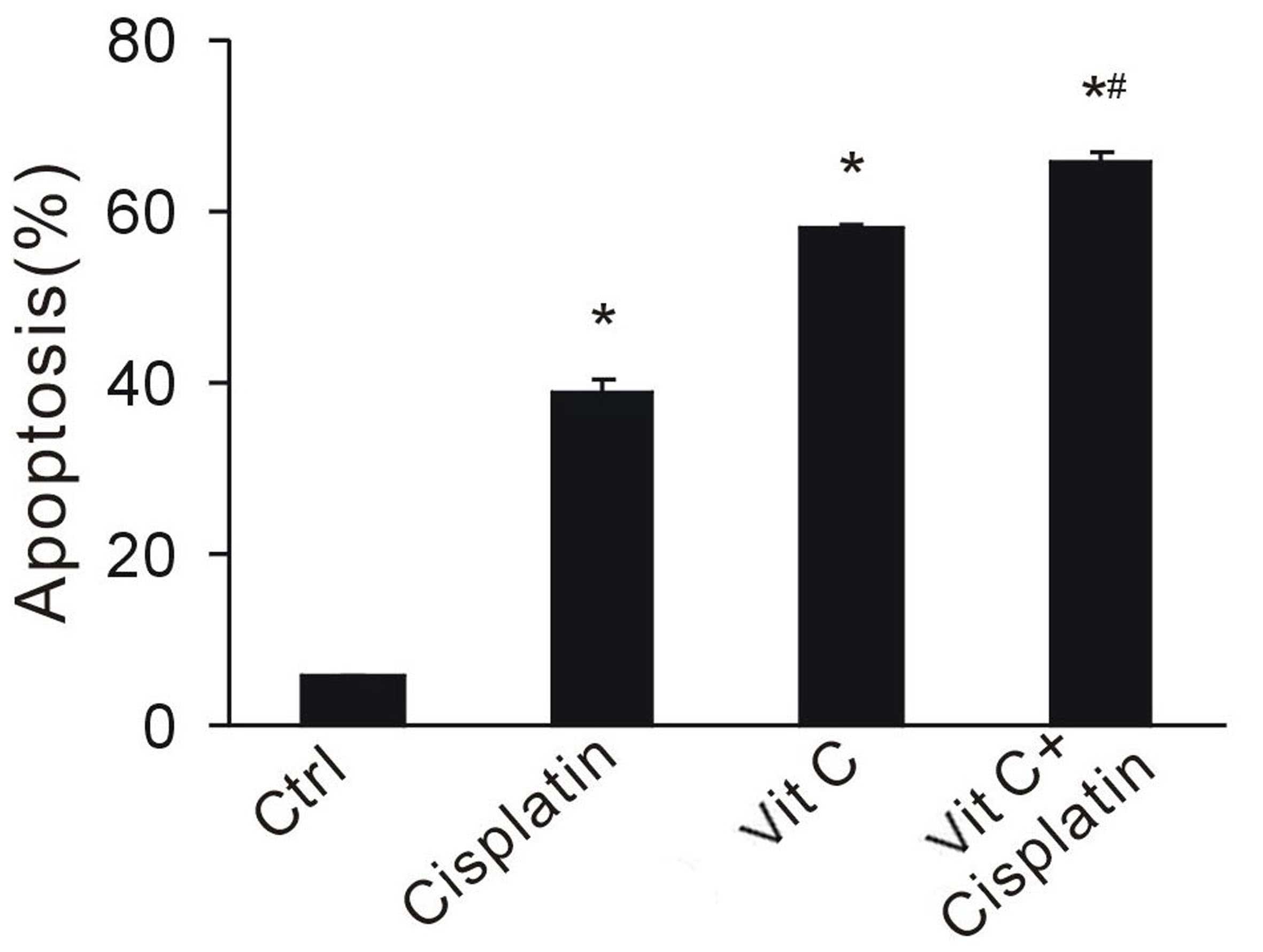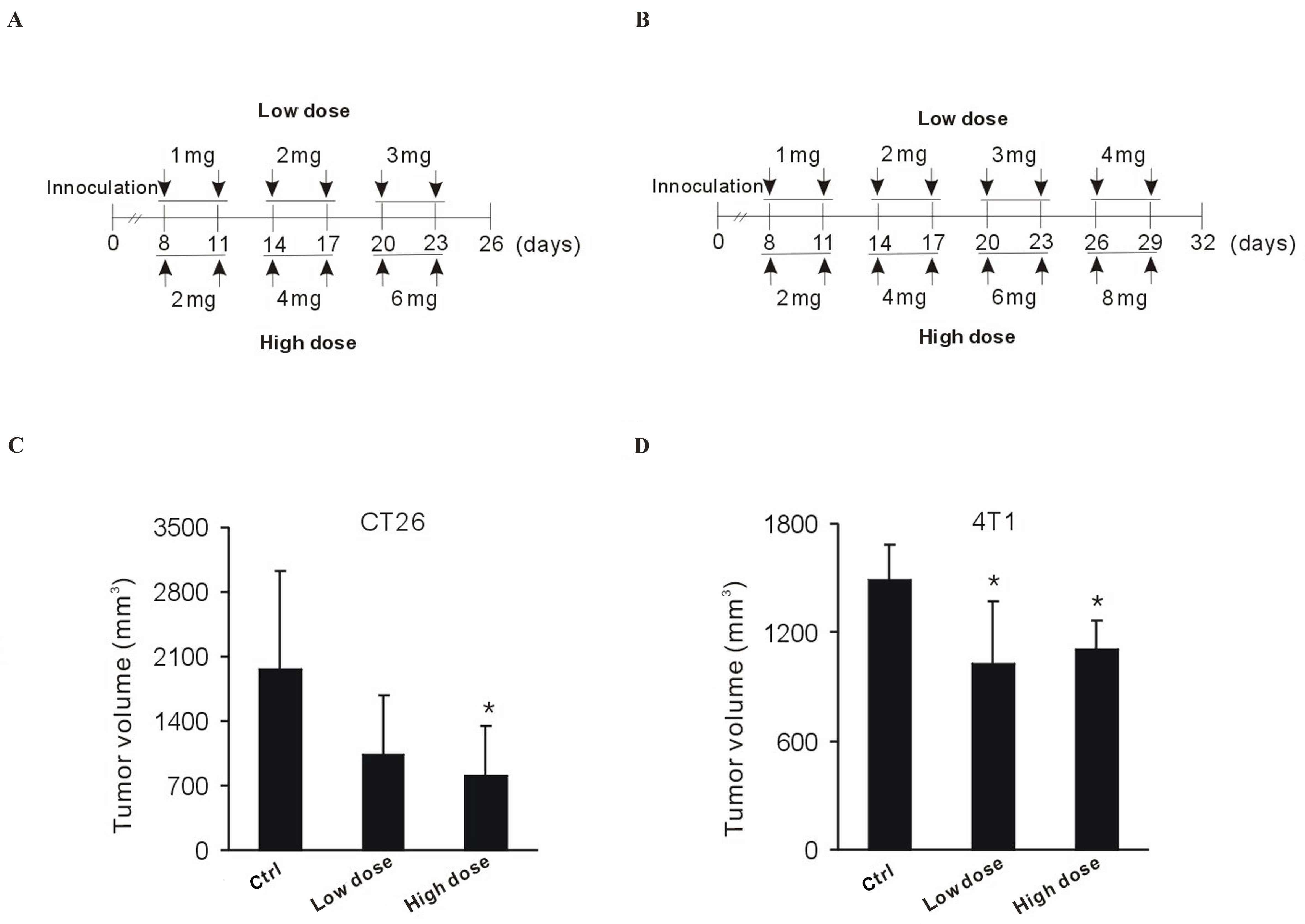|
1
|
Klenner FR: The treatment of poliomyelitis
and other virus diseases with vitamin C. South Med Surg.
111:209–214. 1949.PubMed/NCBI
|
|
2
|
Bansal P, Saw S, Govindaraj D and Arora N:
Intranasal administration of a combination of choline chloride,
vitamin C, and selenium attenuates the allergic effect in a mouse
model of airway disease. Free Radic Biol Med. 73:358–365. 2014.
View Article : Google Scholar : PubMed/NCBI
|
|
3
|
Padayatty SJ, Sun AY, Chen Q, Espey MG,
Drisko J and Levine M: Vitamin C: Intravenous use by complementary
and alternative medicine practitioners and adverse effects. PLoS
One. 5:e114142010. View Article : Google Scholar : PubMed/NCBI
|
|
4
|
Wu H, Wu Y, Ai Z, Yang L, Gao Y, Du J, Guo
Z and Zhang Y: Vitamin C enhances Nanog expression via activation
of the JAK/STAT signaling pathway. Stem Cells. 32:166–176. 2014.
View Article : Google Scholar : PubMed/NCBI
|
|
5
|
Chen CL, Tsukamoto H, Liu JC, Kashiwabara
C, Feldman D, Sher L, Dooley S, French SW, Mishra L, Petrovic L, et
al: Reciprocal regulation by TLR4 and TGF-β in tumor-initiating
stem-like cells. J Clin Invest. 123:2832–2849. 2013. View Article : Google Scholar : PubMed/NCBI
|
|
6
|
Cavaleri F and Schöler HR: Nanog: A new
recruit to the embryonic stem cell orchestra. Cell. 113:551–552.
2003. View Article : Google Scholar : PubMed/NCBI
|
|
7
|
Suzuki A, Raya A, Kawakami Y, Morita M,
Matsui T, Nakashima K, Gage FH, Rodríguez-Esteban C and Izpisúa
Belmonte JC: Nanog binds to Smad1 and blocks bone morphogenetic
protein-induced differentiation of embryonic stem cells. Proc Natl
Acad Sci USA. 103:10294–10299. 2006. View Article : Google Scholar : PubMed/NCBI
|
|
8
|
Esteban MA, Wang T, Qin B, Yang J, Qin D,
Cai J, Li W, Weng Z, Chen J, Ni S, et al: Vitamin C enhances the
generation of mouse and human induced pluripotent stem cells. Cell
Stem Cell. 6:71–79. 2010. View Article : Google Scholar : PubMed/NCBI
|
|
9
|
Silva J, Barrandon O, Nichols J, Kawaguchi
J, Theunissen TW and Smith A: Promotion of reprogramming to ground
state pluripotency by signal inhibition. PLoS Biol. 6:e2532008.
View Article : Google Scholar : PubMed/NCBI
|
|
10
|
McCormick WJ: Cancer: The preconditioning
factor in pathogenesis; a new etiologic approach. Arch Pediatr.
71:313–322. 1954.PubMed/NCBI
|
|
11
|
Cameron E and Rotman D: Ascorbic acid,
cell proliferation, and cancer. Lancet. 1:5421972. View Article : Google Scholar : PubMed/NCBI
|
|
12
|
Cameron E and Pauling L: Supplemental
ascorbate in the supportive treatment of cancer: Reevaluation of
prolongation of survival times in terminal human cancer. Proc Natl
Acad Sci USA. 75:4538–4542. 1978. View Article : Google Scholar : PubMed/NCBI
|
|
13
|
Ma Y, Chapman J, Levine M, Polireddy K,
Drisko J and Chen Q: High-dose parenteral ascorbate enhanced
chemosensitivity of ovarian cancer and reduced toxicity of
chemotherapy. Sci Transl Med. 6:222ra182014. View Article : Google Scholar : PubMed/NCBI
|
|
14
|
González MJ, Miranda-Massari JR, Mora EM,
Guzmán A, Riordan NH, Riordan HD, Casciari JJ, Jackson JA and
Román-Franco A: Orthomolecular oncology review: Ascorbic acid and
cancer 25 years later. Integr Cancer Ther. 4:32–44. 2005.
View Article : Google Scholar : PubMed/NCBI
|
|
15
|
Shi Y: Histone lysine demethylases:
Emerging roles in development, physiology and disease. Nat Rev
Genet. 8:829–833. 2007. View
Article : Google Scholar : PubMed/NCBI
|
|
16
|
Chen Q, Espey MG, Sun AY, Lee JH, Krishna
MC, Shacter E, Choyke PL, Pooput C, Kirk KL, Buettner GR and Levine
M: Ascorbate in pharmacologic concentrations selectively generates
ascorbate radical and hydrogen peroxide in extracellular fluid in
vivo. Proc Natl Acad Sci USA. 104:8749–8754. 2007. View Article : Google Scholar : PubMed/NCBI
|
|
17
|
Supabphol A, Muangman V, Chavasiri W,
Supabphol R and Gritsanapan W: N-acetylcysteine inhibits
proliferation, adhesion, migration and invasion of human bladder
cancer cells. J Med Assoc Thai. 92:1171–1177. 2009.PubMed/NCBI
|
|
18
|
Creagan ET, Moertel CG, O'Fallon JR,
Schutt AJ, O'Connell MJ, Rubin J and Frytak S: Failure of high-dose
vitamin C (ascorbic acid) therapy to benefit patients with advanced
cancer. A controlled trial. N Engl J Med. 301:687–690. 1979.
View Article : Google Scholar : PubMed/NCBI
|
|
19
|
Padayatty SJ, Sun H, Wang Y, Riordan HD,
Hewitt SM, Katz A, Wesley RA and Levine M: Vitamin C
pharmacokinetics: Implications for oral and intravenous use. Ann
Intern Med. 140:533–537. 2004. View Article : Google Scholar : PubMed/NCBI
|
|
20
|
Levine M, Conry-Cantilena C, Wang Y, Welch
RW, Washko PW, Dhariwal KR, Park JB, Lazarev A, Graumlich JF, King
J and Cantilena LR: Vitamin C pharmacokinetics in healthy
volunteers: Evidence for a recommended dietary allowance. Proc Natl
Acad Sci USA. 93:3704–3709. 1996. View Article : Google Scholar : PubMed/NCBI
|
|
21
|
Hoffer LJ, Levine M, Assouline S,
Melnychuk D, Padayatty SJ, Rosadiuk K, Rousseau C, Robitaille L and
Miller WH Jr: Phase I clinical trial of i.v. ascorbic acid in
advanced malignancy. Ann Oncol. 19:1969–1974. 2008. View Article : Google Scholar : PubMed/NCBI
|



